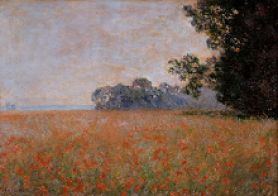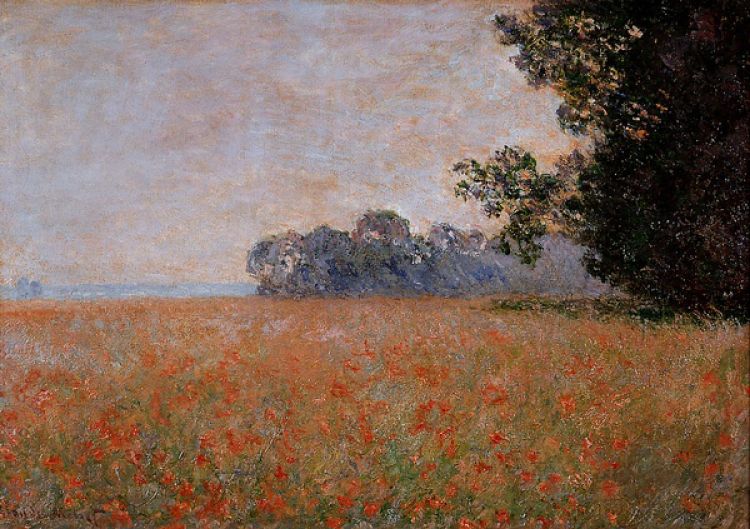Oat Field with Poppies

Claude Monet began his "series" of paintings in 1888, repeating the same subject as many as thirty times in succession, but under constantly changing light conditions. With the characteristic technique of the Impressionists – absence of line, fragmented brush-strokes, juxtaposition of light and complementary colours, a preference for atmospheric perspectives – the artist seeks to capture on the canvas an ephemeral fragment of landscape, rural or urban, or even one caught in the surging industrial mutations of modernity.
Oat Field with Poppies is one of a series of five paintings produced by the artist during the summer of 1890 in Giverny, where he settled at the time of his artistic maturity.
The observation point common to all the paintings in this series reveals a lively field of poppies, bordered on the horizon by hills and, on the right, by two groves. This extremely sober composition gives rise to five chromatic variations which, faithful to the principles of outdoor painting and of the "series" perfected by the artist, transcribe five luminous atmospheres corresponding to five different times of day.
Rather than visible reality, Monet thus seeks to reproduce the sensations aroused by this reality, sensations aroused anew with each new beginning. As an experiment in sensibility, the painting becomes an instant trace of the painter and his vision of the world.
